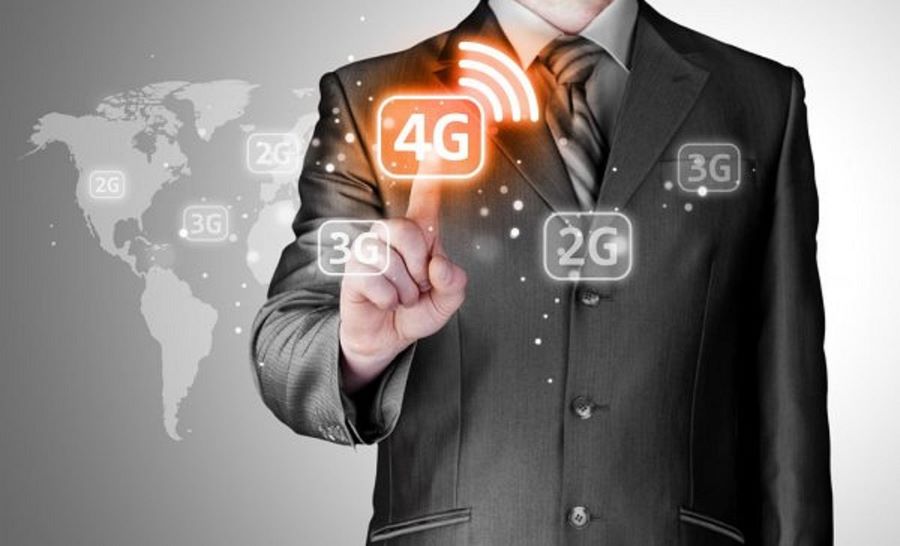In this advanced technological world of mobile phone network, LTE gives a better experience than 3G. The full form of LTE is Long Term Evolution. This term is usually used for a 4G network that provides a fast mobile internet experience. It is commonly referred to as 4G LTE and may be seen on the top right corner of your phone screen. Using a 4G smartphone on a 4G LTE network, for example, allows you to download data from the internet up to ten times quicker than with 3G. All you need for 4G LTE to function is a smartphone that is compatible with it. Read more to know about LTE network on mobile phones.
Also Read: Difference between 4G vs 5G networks
What does LTE Mean?
You might have noticed a small LTE or 4G LTE icon near the signal bar at the top of your phone screen at some time. This indicates that your phone is linked to a 4G LTE network. LTE is the technology that enables 4G cellular networks. Everything you need to know about how it works is right here.
There are now three primary mobile network types in use: 3G, 4G LTE, and 5G. The G in this case stands for ‘generation’. The 3G network is the oldest and is still in use, while the 5G network is the most recent.
When 4G was originally introduced, there were rival technological standards in use around the globe. LTE is the standard that finally won out and is now used across the world. In other words, 4G and LTE are interchangeable terms.
Also Read: Decoding the key differences between 5G and 4G networks
What are LTE Advanced and LTE Advanced Pro?
LTE Advanced is the upgraded version of LTE. LTE Advanced, or LTE-A, introduced a number of innovative approaches that enabled the system to deliver significantly larger data rates as well as improved performance, notably at cell boundaries and other regions where performance would not have been as good otherwise.
LTE enhanced took many years longer to completely develop and spread out across networks, but when it did, its numerous enhanced capabilities provided considerable advantages over conventional LTE.
Key Features of LTE Advanced
- Peak data rates: 1 Gbps downlink, 500 Mbps uplink.
- Spectrum efficiency is three times that of LTE.
- Peak spectrum efficiency is 30 bps/Hz for the downlink and 15 bps/Hz for the uplink.
- Spectrum utilisation: The capacity to provide scalable bandwidth utilisation and spectrum aggregation when a non-contiguous spectrum is required.
- Latency: Less than 50 ms from idle to connected, and then less than 5 ms one way for per-packet transfer.
- The cell edge user throughput will be twice as fast as LTE.
- The average user throughput will be three times that of LTE.
- Compatibility: LTE Advanced must be able to communicate with legacy LTE and 3GPP systems.
LTE-Advanced Pro (LTE-A Pro) is a variant of the LTE standard that is also referred to as 4.5G. LTE-A Pro provides improvements in a variety of areas. It offers Gigabit LTE with speeds up to 2 Gbps via increased carrier aggregation and Licensed-Assisted Access. It also includes LTE IoT upgrades and new features. LTE-A Pro enhances broadcast to a wide range of use cases.
Key Features of LTE Advanced Pro
- Enhanced capacity and efficiency as well as speed.
- Longer battery life.
- Greater alignment with 5G for increased network future-proofing.
- Allows combined frequencies to be sent in concurrently, resulting in better performance.
- LTE-Advanced Pro carrier aggregation to 32 carriers, each with a bandwidth of 100MHz – delivering a maximum aggregated bandwidth of 640 MHz.
- LTE-Advanced Pro is best suited for data-intensive and mission-critical applications such as in-vehicle, primary, and fast site/pop-up networking.
How Does LTE Work?
LTE is used to send large data packets to an internet protocol system (IPS). Previous generations of data transmission technologies, such as worldwide system for mobile communications (GSM) and code-division multiple access (CDMA), transported far less data than LTE.
LTE allows you to send far more data while also improving your service. Conventional phone calls are only accessible in 2G and 3G networks via the network’s circuit-switched part.
LTE vs. 5G
Here are some of the major differences between LTE and 5G-
- LTE versus 5G Speed: LTE has a maximum speed of 100Mbps, whereas 5G has a maximum speed of 1Gbps.
- Coverage of LTE vs. 5G: LTE has extensive coverage, however, 5G is still in its early phases of implementation.
- Capacity of LTE vs. 5G: LTE can handle up to 1000 devices per cell, but 5G can support up to 10,000 devices per cell.
Now that you’ve got a clear idea of what exactly is LTE and how does it differ from 5G network, how about checking out Airtel’s bestselling 5G plans. Download the Airtel Thanks app and activate 5G connection today.
Conclusion
We hope you’ve got a fair idea of what exactly is an LTE and how is it different from 5G and other networks.


 Get App
Get App  Airtel Store
Airtel Store  Login
Login 


